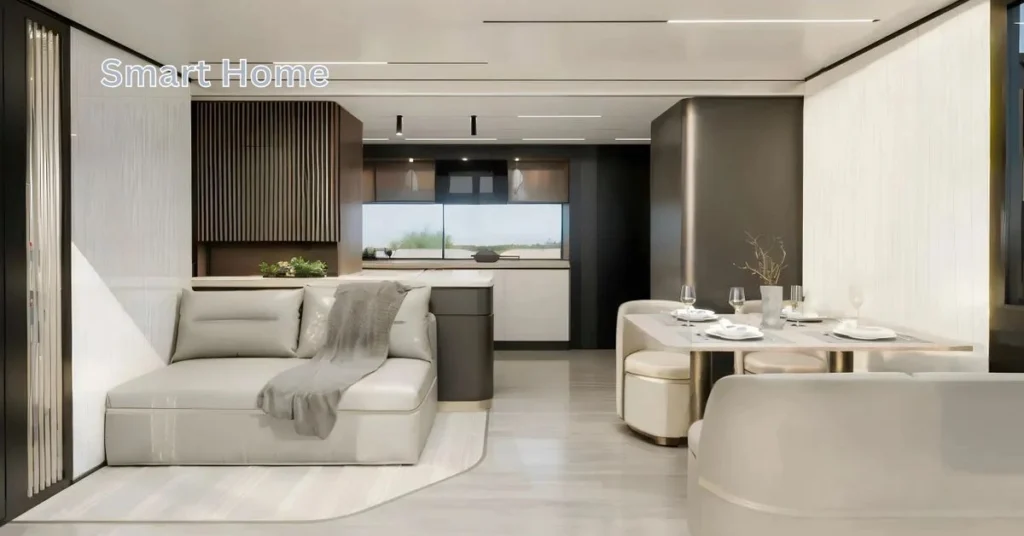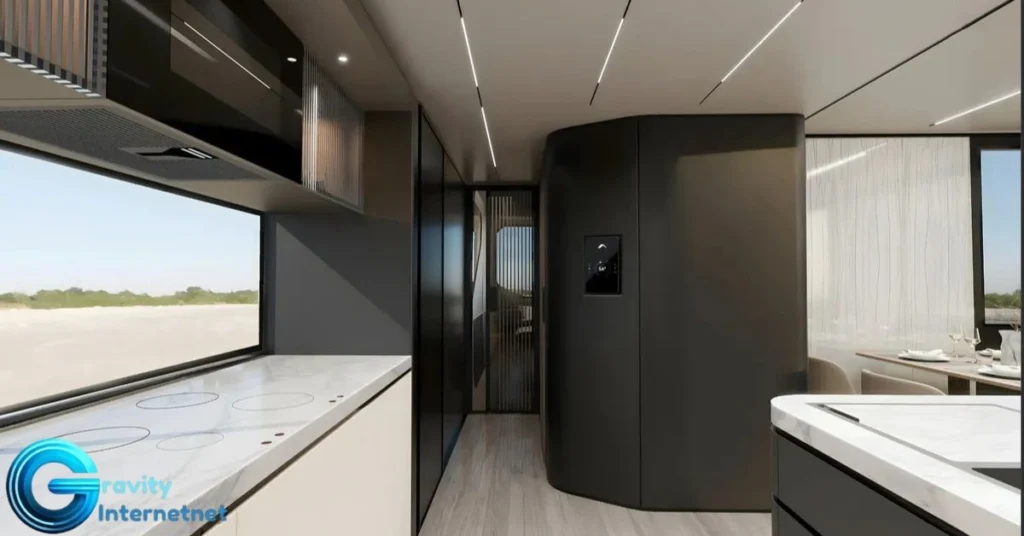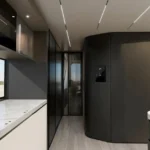In 2025, the concept of a “smart home” has evolved from novelty to normalcy. No longer limited to tech enthusiasts, smart homes have now become a mainstream lifestyle choice, reshaping the way we live, interact, and experience comfort within our private spaces. The idea is simple: let technology do the thinking for us. But in practice, smart homes offer far more than just convenience. They represent a leap toward a more sustainable, secure, and emotionally intelligent future.
At its core, a smart home in 2025 is not defined merely by gadgets—it’s about interconnectivity, adaptability, and predictive automation. It’s a home that knows you, responds to you, and even learns from you.
The Evolution of Smart Homes: From Gadgets to Intelligence
Over the last decade, smart technology has undergone a major transformation. Early smart devices worked in silos—your thermostat didn’t talk to your light bulbs, and your security system had no idea when you were home. But 2025 marks the maturity of interoperable smart ecosystems.
Thanks to protocols like Matter—an open-source standard that ensures devices from different brands work together seamlessly—smart homes now function more like symphonies than solo acts. Devices coordinate to offer a harmonious, unified experience. Your blinds open with the sunrise, your thermostat adjusts based on your calendar, and your home theater dims the lights automatically as your favorite show starts playing.
Beyond Automation: Smart Homes Are Becoming Emotional Spaces
One of the most remarkable changes in 2025 is the emotional intelligence of smart systems. These homes go beyond automation; they anticipate needs. Through AI-driven analytics, they learn behavior patterns and can adapt to your mood, habits, and even stress levels.
Imagine coming home after a stressful day. Your home detects a change in your tone via your voice assistant. It responds by dimming the lights, playing your favorite calming playlist, and even suggesting a cup of tea via your connected kitchen appliances. In essence, your home becomes a personal wellness coach.
This shift is supported by machine learning and contextual awareness—technologies that give your home the ability to understand not just commands, but intentions.
The Foundation of a Smart Home: Connectivity and Control

The spine of every smart home is a robust, fast, and secure internet connection. In 2025, Wi-Fi 7 and 5G hybrid networks ensure low-latency communication between devices, while AI edge computing enables faster processing without relying entirely on the cloud.
Control has also become more intuitive. Voice assistants have evolved into multi-modal AI interfaces. Instead of rigid commands like “Turn off the lights,” users can speak naturally: “I’m going to bed now,” triggering a pre-programmed scene—turning off lights, locking doors, lowering temperature, and enabling security systems.
Touch panels, mobile apps, gesture control, and even brain-computer interfaces (BCIs) are starting to replace traditional switches.
Security in the Smart Era: Proactive, Not Reactive
Security remains a key driver behind smart home adoption. But unlike early systems that merely recorded incidents, smart security in 2025 is preventive.
Facial recognition-powered doorbells, AI motion detection, and perimeter sensors now work in tandem. These systems not only detect unusual activity but also analyze behavioral anomalies to alert homeowners even before an incident occurs.
Moreover, biometric locks, remote access logs, and geo-fencing add layers of protection. Family members’ smartphones act as digital keys, while guests can be granted time-limited virtual access.
Cloud-free, encrypted data processing also ensures privacy—a concern that previously held back many users from embracing smart home security.
Energy Efficiency and Sustainability: The Green Smart Home
With growing environmental concerns, the modern smart home isn’t just intelligent—it’s eco-conscious. Devices now come with energy monitoring, consumption forecasting, and adaptive control that optimize usage.
Smart thermostats now interact with weather APIs, solar-powered appliances communicate with the grid, and AI energy dashboards guide homeowners on how to reduce consumption. These systems help cut down not only electricity bills but also the household’s carbon footprint.
Additionally, homes in 2025 are designed with green architecture in mind—smart irrigation systems for gardens, smart water heaters that heat only when needed, and even automated waste sorting units connected to municipal recycling programs.
Entertainment Reimagined: Immersive Living Spaces
Entertainment in 2025 is immersive, personalized, and seamlessly integrated. Smart homes now double as media ecosystems.
AI-curated content suggestions are displayed on smart walls, which transform from ordinary paint into OLED display panels. Spatial audio adapts to your position in the room, while motion sensors adjust lighting based on viewer placement and preferences.
Gamers enjoy AR/VR integration, with smart floors responding to in-game actions. Movie lovers benefit from dynamic ambiance settings, and music aficionados get concert-like experiences through acoustically intelligent smart speakers.
Entertainment is no longer about passive watching—it’s about experiential immersion.
Health and Wellness at the Core of Design
A major innovation in 2025’s smart homes is the prioritization of wellness. Smart devices now serve as health companions, not just convenience tools.
From air purifiers that adapt to pollen levels and carbon dioxide sensors that monitor air quality, to smart beds that adjust firmness based on sleep cycles—well-being is integrated into the very fabric of smart homes.
Bathroom mirrors double as health monitors, checking skin hydration, heart rate, and even dietary deficiencies through non-invasive diagnostics. Smart kitchens suggest recipes based on your health goals and monitor expiry dates automatically through connected pantries.
The focus is shifting from reactive healthcare to preventive wellness, embedded right into everyday routines.
Affordability and Accessibility: Smart Homes for Everyone
One of the biggest myths that still exists is that smart homes are expensive. But in 2025, smart technology will be democratized. From low-cost smart plugs and affordable subscription-based automation platforms to open-source software for DIY enthusiasts—there’s an entry point for every budget.
Companies now offer modular solutions—allowing users to start small and scale gradually. Renters are not left out either; portable smart devices and cloud-based control hubs mean that you don’t need to own a home to enjoy its benefits.
Affordability, accessibility, and usability have all improved, making smart living a realistic goal for the masses—not just the tech elite.
Conclusion
Building a smart home in 2025 is no longer about owning the most devices—it’s about creating a living experience that’s efficient, secure, personalized, and sustainable. The boundaries between humans and machines are slowly dissolving, not in a dystopian sense, but in a way that enriches daily life.
The smart home of 2025 doesn’t just serve you; it understands you. It listens, learns, adapts—and evolves. Whether you’re aiming for convenience, security, environmental impact, or a better quality of life, a well-designed smart home brings all these benefits under one roof.
In short, a smart home in 2025 is not just a place to live. It’s a dynamic partner in living well.








